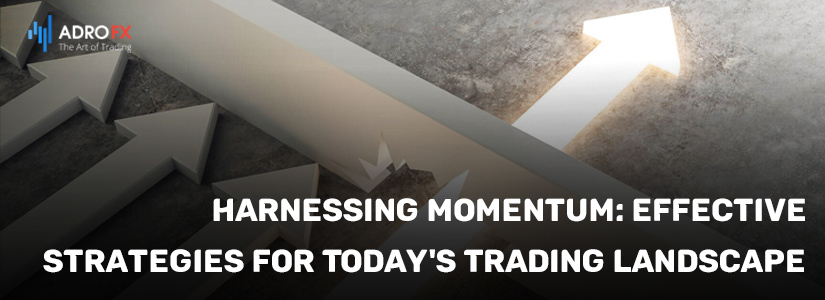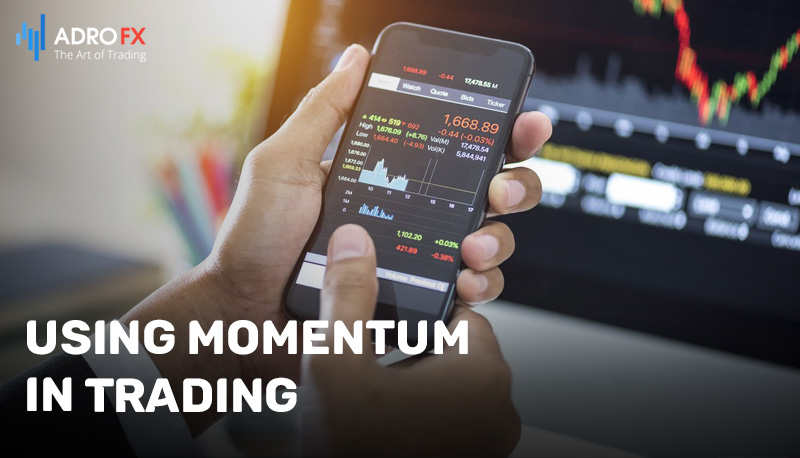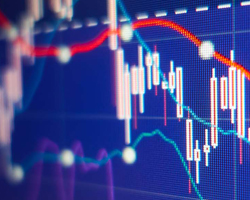Harnessing Momentum: Effective Strategies for Today's Trading Landscape

In the dynamic world of trading and investments, the ability to identify and leverage momentum is a coveted skill. Momentum trading strategies have long been a focal point for traders seeking to capitalize on the market's prevailing trends and price movements. In this article, we'll delve into a comprehensive guide on valuable momentum trading strategies that are not only relevant but also highly effective in today's ever-evolving financial landscape. Whether you're a seasoned trader looking to fine-tune your techniques or a newcomer eager to embark on your trading journey, these strategies offer a roadmap to harness the power of momentum and navigate the markets with confidence. Join us as we explore the tools, tactics, and insights that can empower you to make informed trading decisions in the here and now.
What Is Momentum in Finance?
Momentum in finance refers to the concept that assets, such as stocks or other securities, that have performed well in the recent past are more likely to continue performing well in the near future, and assets that have performed poorly are more likely to continue performing poorly. This concept is often used as the basis for various investment and trading strategies.
Momentum in finance encompasses several essential aspects:
First and foremost, it revolves around the notion of price trends. Positive momentum signifies an upward price trend, while negative momentum indicates a downtrend. These trends serve as a cornerstone of momentum analysis, guiding traders and investors in their decision-making.
Relative strength, another critical element, involves comparing an asset's performance to that of peers or benchmark indices within the same category. An asset exhibiting strong relative strength has outperformed its counterparts or the broader market, signifying its momentum.
Furthermore, momentum can manifest over various time frames, accommodating the preferences of traders and investors. Short-term momentum evaluation often spans days or weeks, whereas long-term analysis extends over several months or even years. The chosen time frame directly influences the depth of insight into momentum trends.
The behavioral facet of momentum can't be overstated. It delves into the realm of investor behavior and psychology, as market participants have a propensity to chase winning assets (positive momentum) and offload losing ones (negative momentum). This behavior significantly contributes to the continuation of price trends.
Naturally, risks and rewards are intertwined with momentum trading. Investing in assets with strong momentum can be rewarding, but it carries inherent risks, especially when prices are already elevated. The potential for overvaluation is a risk that prudent investors must consider when engaging in momentum strategies.
However, it's essential to note that while momentum is widely observed and recognized, it doesn't guarantee future performance. Some investors adhere to the principle of "mean reversion." This notion posits that assets that significantly deviate from their historical averages may eventually revert to those averages. It serves as a counterbalance to the idea of perpetual momentum, underlining the cyclical nature of financial markets.

Using Momentum in Trading
Using momentum in trading involves capitalizing on the price trends of financial assets, such as stocks, currencies, or commodities, to make buy or sell decisions. Traders believe that assets with strong recent performance are likely to continue moving in the same direction for a period of time. Here are some key aspects to consider when using momentum in trading:
In the world of trading, identifying momentum is a critical skill. Traders often turn to technical indicators and quantitative measures to discern this elusive force. These tools, like moving averages, relative strength indicators (RSI), and price rate of change, serve as the trader's compass, helping them navigate the tumultuous seas of financial markets.
Moreover, time frames play a significant role in momentum trading. Traders make choices based on different time horizons - short-term for intraday or daily trading, intermediate-term for weekly or monthly strategies, or long-term for the patient investor looking at annual or multi-year trends. This choice hinges on how their trading strategy aligns with their objectives and goals.
As traders set sail in search of profitable trades, they keenly watch for opportune entry and exit points. A strong momentum signal often becomes their North Star, guiding their actions. This signal could manifest when an asset's price crosses a moving average, or when the RSI warns of overbought conditions. For safety, they set Stop Loss and Take Profit orders to manage risk and secure profits.
Risk management is an ever-present consideration in momentum trading. The art of trading lies in proper position sizing and maintaining favorable risk/reward ratios. These tactics are the trader's armor, guarding against potential losses and keeping them in control.
Diversification acts as the trader's safety net. By spreading their investments across a diverse portfolio, they reduce risk. The beauty of diversification lies in its potential to mitigate losses in assets suffering from poor momentum, while simultaneously benefiting from the strong momentum of others.
Before embarking on a journey of momentum trading, traders turn to historical data in a process known as backtesting. This exercise evaluates the effectiveness of their strategy and uncovers potential pitfalls lurking in the shadows.
Some traders don't solely rely on momentum but also employ fundamental analysis. They scrutinize earnings reports, economic data, and industry trends, ensuring that they trade assets with strong underlying fundamentals.
Psychological fortitude is crucial in momentum trading. Traders must recognize the behavioral factors at play - overconfidence, herd mentality, and other biases. Staying disciplined and avoiding impulsive decisions, like chasing extreme price movements, is vital for success.
Momentum strategies tend to shine when market volatility runs high, with pronounced price trends. However, traders must also be prepared for increased market risk during such periods.
Lastly, the trader's journey is a continuous one. They must keep a vigilant eye on the market and their open positions. Staying informed about news, events, and economic indicators is vital, as these factors can dramatically impact their chosen assets.
It's important to note that momentum trading is not without risks. Assets can experience reversals, and markets can be unpredictable. Traders may also face transaction costs, particularly in short-term trading. Therefore, it's crucial to have a well-defined trading plan, to use appropriate risk management strategies, and to be prepared for the possibility of losses.
Momentum trading is just one of many trading strategies available, and it may not be suitable for all traders. Each individual should consider their risk tolerance, time horizon, and trading goals when deciding whether to use momentum as part of their trading approach.
Top Momentum Indicators
Momentum indicators are essential tools for traders and investors seeking to identify and measure the strength and direction of price trends. These indicators help traders make informed decisions about entry and exit points in the financial markets. Here are some of the top momentum indicators commonly used in trading:
- Relative Strength Index (RSI)
RSI is a popular momentum oscillator that measures the speed and change of price movements. It ranges from 0 to 100 and is used to identify overbought and oversold conditions. An RSI above 70 typically indicates an asset is overbought, while an RSI below 30 suggests it is oversold. - Moving Average Convergence Divergence (MACD)
MACD is a versatile indicator that combines aspects of trend-following and momentum. It consists of two lines, the MACD line and the signal line, and a histogram. Traders use crossovers and divergences between these lines to identify potential buy and sell signals. - Stochastic Oscillator
The Stochastic oscillator measures the location of an asset's closing price relative to its high-low range over a specified period. It generates values between 0 and 100, with readings above 80 indicating overbought conditions and readings below 20 indicating oversold conditions. - Momentum Indicator
The basic momentum indicator calculates the difference between the current price and a specified number of periods back. It provides a numerical value representing the rate of change in price. Traders watch for positive or negative momentum to gauge the strength of a trend. - Rate of Change (ROC)
The ROC measures the percentage change in price over a specified number of periods. It is used to identify the speed and magnitude of price changes. Positive ROC values indicate upward momentum, while negative values suggest downward momentum. - Commodity Channel Index (CCI)
The CCI measures the difference between an asset's typical price and its simple moving average, normalized by an average absolute deviation. It is primarily used to identify overbought and oversold conditions and potential trend reversals. - Bollinger Bands
Bollinger Bands consist of a simple moving average (SMA) with an upper and lower band that represents two standard deviations from the SMA. They are used to identify volatility and overbought/oversold conditions.

Top Tips for Momentum Trading
Momentum trading, a dynamic and potentially lucrative approach to financial markets, offers a blend of opportunity and risk. To navigate this landscape effectively, consider the following key principles:
First and foremost, ensure you possess a firm grasp of trading fundamentals. Knowledge of market orders, risk management strategies, and the use of Stop Loss and Take Profit orders is essential.
Keeping abreast of market developments is critical. Regularly monitor news and events with the potential to influence the assets you trade. Factors like corporate earnings, economic indicators, and geopolitical events can have a profound impact on market sentiment.
Carefully select the assets you intend to trade. Opt for those known to exhibit strong momentum and ensure they offer sufficient liquidity. Asset classes such as stocks, currencies, and commodities are commonly chosen, but the key lies in aligning your selection with your overall trading strategy.
Choose the most appropriate time frame for your trading activities. Whether you prefer short-term intraday trading or longer-term monthly trading, your choice should align with your objectives and the amount of time you can dedicate.
Leverage technical analysis as the backbone of your trading strategy. Employ indicators like RSI, MACD, and moving averages to identify potential entry and exit points. Backtesting can provide validation for your strategy's effectiveness.
Place risk management at the forefront of your trading process. Employ proper position sizing and employ Stop Loss orders to limit your potential losses. A common guideline suggests risking no more than 1-2% of your trading capital on a single trade.
Reduce risk by diversifying your portfolio. Avoid concentrating all your capital on a single asset or market. Diversification can help safeguard against potential losses and volatility.
Develop a comprehensive trading plan encompassing your entry and exit criteria, risk tolerance, and position sizing. Staying disciplined and adhering to your plan is crucial to avoid impulsive actions driven by emotions.
Control your emotions, as emotional discipline is vital in momentum trading. Guard against the influence of greed and fear, and maintain a rational mindset, regardless of winning or losing streaks.
Prepare to adapt as market conditions evolve. Trading strategies that work today may not work tomorrow. Continuous learning and adaptability are keys to success.
Avoid impulsivity and be patient. Not every price movement is a signal for action. Wait for solid and confirmed trends to develop, and steer clear of low volatility periods.
Regularly analyze your trading performance. Learn from your successes and losses, and use this knowledge to refine your strategy and improve your trading skills.
Balance your technical analysis with an awareness of fundamental factors. Understanding the underlying drivers of momentum can provide valuable insights.
Remember that trading is inherently uncertain, and there are no guarantees of success. Approach momentum trading with a balanced mix of discipline, patience, and a focus on long-term objectives. Success in momentum trading often involves combining technical analysis with fundamental insights and a robust risk management strategy.
Conclusion
In the ever-evolving world of trading and investments, the ability to harness momentum is a prized skill. Momentum trading strategies continue to be a focal point for traders seeking to navigate market trends and price movements. In this article, we've delved into a comprehensive guide on valuable momentum trading strategies. These strategies are not only relevant but also highly effective in today's dynamic financial landscape.
Whether you're a seasoned trader fine-tuning your techniques or a newcomer embarking on your trading journey, these strategies offer a roadmap to leverage the power of momentum with confidence. Join us as we explore the tools, tactics, and insights that empower you to make informed trading decisions in the here and now.

About AdroFx
Established in 2018, AdroFx is known for its high technology and its ability to deliver high-quality brokerage services in more than 200 countries around the world. AdroFx makes every effort to keep its customers satisfied and to meet all the trading needs of any trader. With the five types of trading accounts, we have all it takes to fit any traders` needs and styles. The company provides access to 115+ trading instruments, including currencies, metals, stocks, and cryptocurrencies, which make it possible to make the most out of trading on the financial markets. Considering all the above, AdroFx is the perfect variant for anyone who doesn't settle for less than the best.









